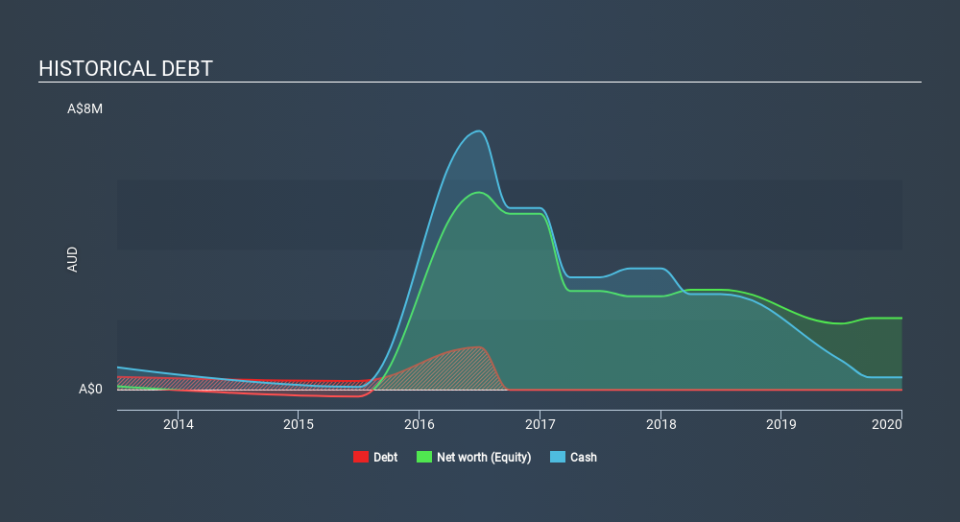Here's Why AD1 Holdings (ASX:AD1) Must Use Its Cash Wisely

There's no doubt that money can be made by owning shares of unprofitable businesses. For example, although software-as-a-service business Salesforce.com lost money for years while it grew recurring revenue, if you held shares since 2005, you'd have done very well indeed. Having said that, unprofitable companies are risky because they could potentially burn through all their cash and become distressed.
So, the natural question for AD1 Holdings (ASX:AD1) shareholders is whether they should be concerned by its rate of cash burn. For the purposes of this article, cash burn is the annual rate at which an unprofitable company spends cash to fund its growth; its negative free cash flow. First, we'll determine its cash runway by comparing its cash burn with its cash reserves.
Check out our latest analysis for AD1 Holdings
Does AD1 Holdings Have A Long Cash Runway?
You can calculate a company's cash runway by dividing the amount of cash it has by the rate at which it is spending that cash. When AD1 Holdings last reported its balance sheet in December 2019, it had zero debt and cash worth AU$350k. In the last year, its cash burn was AU$5.0m. So it seems to us it had a cash runway of less than two months from December 2019. To be frank we are alarmed by how short that cash runway is! You can see how its cash balance has changed over time in the image below.
How Well Is AD1 Holdings Growing?
At first glance it's a bit worrying to see that AD1 Holdings actually boosted its cash burn by 8.0%, year on year. But looking on the bright side, its revenue gained by 84%, lending some credence to the growth narrative. Of course, with spend going up shareholders will want to see fast growth continue. It seems to be growing nicely. Of course, we've only taken a quick look at the stock's growth metrics, here. You can take a look at how AD1 Holdings is growing revenue over time by checking this visualization of past revenue growth.
How Hard Would It Be For AD1 Holdings To Raise More Cash For Growth?
Given the trajectory of AD1 Holdings's cash burn, many investors will already be thinking about how it might raise more cash in the future. Companies can raise capital through either debt or equity. One of the main advantages held by publicly listed companies is that they can sell shares to investors to raise cash to fund growth. By comparing a company's annual cash burn to its total market capitalisation, we can estimate roughly how many shares it would have to issue in order to run the company for another year (at the same burn rate).
AD1 Holdings's cash burn of AU$5.0m is about 69% of its AU$7.2m market capitalisation. That's very high expenditure relative to the company's size, suggesting it is an extremely high risk stock.
Is AD1 Holdings's Cash Burn A Worry?
On this analysis of AD1 Holdings's cash burn, we think its revenue growth was reassuring, while its cash runway has us a bit worried. After considering the data discussed in this article, we don't have a lot of confidence that its cash burn rate is prudent, as it seems like it might need more cash soon. Notably, our data indicates that AD1 Holdings insiders have been trading the shares. You can discover if they are buyers or sellers by clicking on this link.
If you would prefer to check out another company with better fundamentals, then do not miss this free list of interesting companies, that have HIGH return on equity and low debt or this list of stocks which are all forecast to grow.
If you spot an error that warrants correction, please contact the editor at editorial-team@simplywallst.com. This article by Simply Wall St is general in nature. It does not constitute a recommendation to buy or sell any stock, and does not take account of your objectives, or your financial situation. Simply Wall St has no position in the stocks mentioned.
We aim to bring you long-term focused research analysis driven by fundamental data. Note that our analysis may not factor in the latest price-sensitive company announcements or qualitative material. Thank you for reading.

